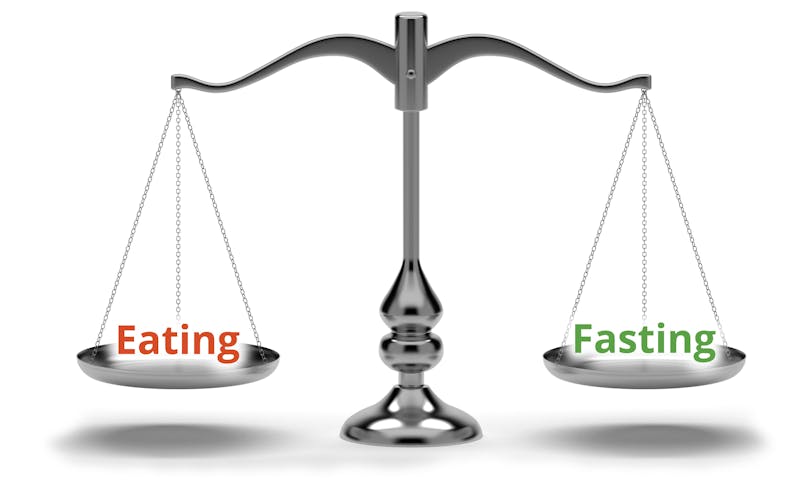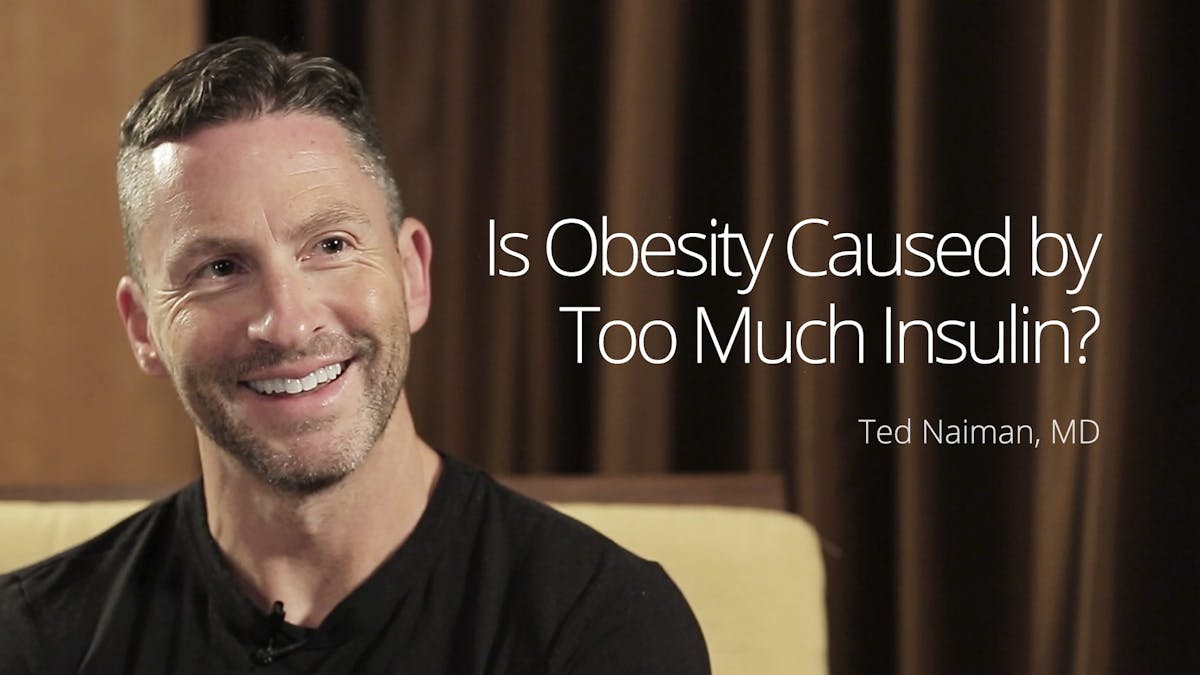But now many people are re-discovering this dietary intervention. It can carry huge benefits if it is done right: weight loss, increased energy, reversal of type 2 diabetes and many other things. Plus, you’ll save time and money.
In this beginner’s guide you can learn everything you need to know about intermittent fasting.
Intermittent fasting – isn’t that starvation?
No. Fasting differs from starvation in one crucial way. Control. Starvation is the involuntary absence of food. It is neither deliberate nor controlled. Fasting, on the other hand, is the voluntary withholding of food for spiritual, health, or other reasons.
Food is easily available, but you choose not to eat it. This can be for any period of time, from a few hours up to days or even weeks on end. You may begin a fast at any time of your choosing, and you may end a fast at will, too. You can start or stop a fast for any reason or no reason at all.
Fasting has no standard duration, as it is merely the absence of eating. Anytime that you are not eating, you are fasting. For example, you may fast between dinner and breakfast the next day, a period of approximately 12-14 hours. In that sense, fasting should be considered a part of everyday life.
Consider the term “break fast”. This refers to the meal that breaks your fast – which is done daily. Rather than being some sort of cruel and unusual punishment, the English language implicitly acknowledges that fasting should be performed daily, even if only for a short duration.
Intermittent fasting is not something queer and curious, but a part of everyday, normal life. It is perhaps the oldest and most powerful dietary intervention imaginable. Yet somehow we have forgotten its awesome power and ignored its therapeutic potential.
Learning how to fast properly gives us the option of using it or not.
How does intermittent fasting work?
At its very core, fasting simply allows the body to burn off excess body fat. It is important to realize that this is normal and humans have evolved to fast without detrimental health consequences. Body fat is merely food energy that has been stored away. If you don’t eat, your body will simply “eat” its own fat for energy.
Life is about balance. The good and the bad. The yin and the yang. The same applies to eating and fasting. Fasting, after all, is simply the flip side of eating. If you are not eating, you are fasting. Here’s how it works:
When we eat, more food energy is ingested than can immediately be used. Some of this energy must be stored away for later use. Insulin is the key hormone involved in the storage of food energy.
Insulin rises when we eat, helping to store the excess energy in two separate ways. Sugars can be linked into long chains, called glycogen and then stored in the liver. There is, however, limited storage space; and once that is reached, the liver starts to turn the excess glucose into fat. This process is called De-Novo Lipogenesis (meaning literally Making Fat from New).
Some of this newly created fat is stored in the liver, but most of it is exported to other fat deposits in the body. While this is a more complicated process, there is no limit to the amount of fat that can be created. So, two complementary food energy storage systems exist in our bodies. One is easily accessible but with limited storage space (glycogen), and the other is more difficult to access but has unlimited storage space (body fat).
The process goes in reverse when we do not eat (intermittent fasting). Insulin levels fall, signaling the body to start burning stored energy as no more is coming through food. Blood glucose falls, so the body must now pull glucose out of storage to burn for energy.
Glycogen is the most easily accessible energy source. It is broken down into glucose molecules to provide energy for the other cells. This can provide enough energy to power the body for 24-36 hours. After that, the body will start breaking down fat for energy.
So, that the body only really exists in two states – the fed (insulin high) state and the fasted (insulin low) state. Either we are storing food energy, or we are burning it. It’s one or the other. If eating and fasting are balanced, then there is no net weight gain.
If we start eating the minute we roll out of bed, and do not stop until we go to sleep, we spend almost all our time in the fed state. Over time, we will gain weight. We have not allowed our body any time to burn food energy.
To restore balance or to lose weight, we simply need to increase the amount of time we burn food energy. That’s intermittent fasting. In essence, fasting allows the body to use its stored energy. After all, that’s what it is there for. The important thing to understand is that there is nothing wrong with that. That is how our bodies are designed. That’s what dogs, cat, lions and bears do. That’s what humans do.
If you are constantly eating, as is often recommended, then your body will simply use the incoming food energy and never burn the body fat. You’ll only store it. Your body will save it for a time when there is nothing to eat. You lack balance. You lack fasting.
Learn more
Benefits of intermittent fasting
Fasting’s most obvious benefit is weight loss. However, there are a myriad of benefits beyond this, many of which were widely known in ancient times.
The fasting periods were often called ‘cleanses’, ‘detoxifications’, or ‘purifications’, but the idea is the same – to abstain from eating food for a certain period of time for health reasons. People imagined that this period of abstinence from food would clear their bodies’ systems of toxins and rejuvenate them. They were more correct than they knew.
Some of the purported physical benefits of fasting include:
Advantages
Fasting offers many important unique advantages that are not available in typical diets.
Where diets complicate life, fasting simplifies. Where diets are expensive, intermittent fasting is free. Where diets can take time, fasting saves time. Where diets are limited, fasting is available anywhere. Where diets have variable efficacy, fasting has unquestioned efficacy. There is no more powerful method for lowering insulin and decreasing body weight.
Success stories

Keto and intermittent fasting: "I am completely blown away by the changes"

How Gino reversed his type 2 diabetes by doing the opposite

Intermittent fasting: down 42 pounds in 14 months










